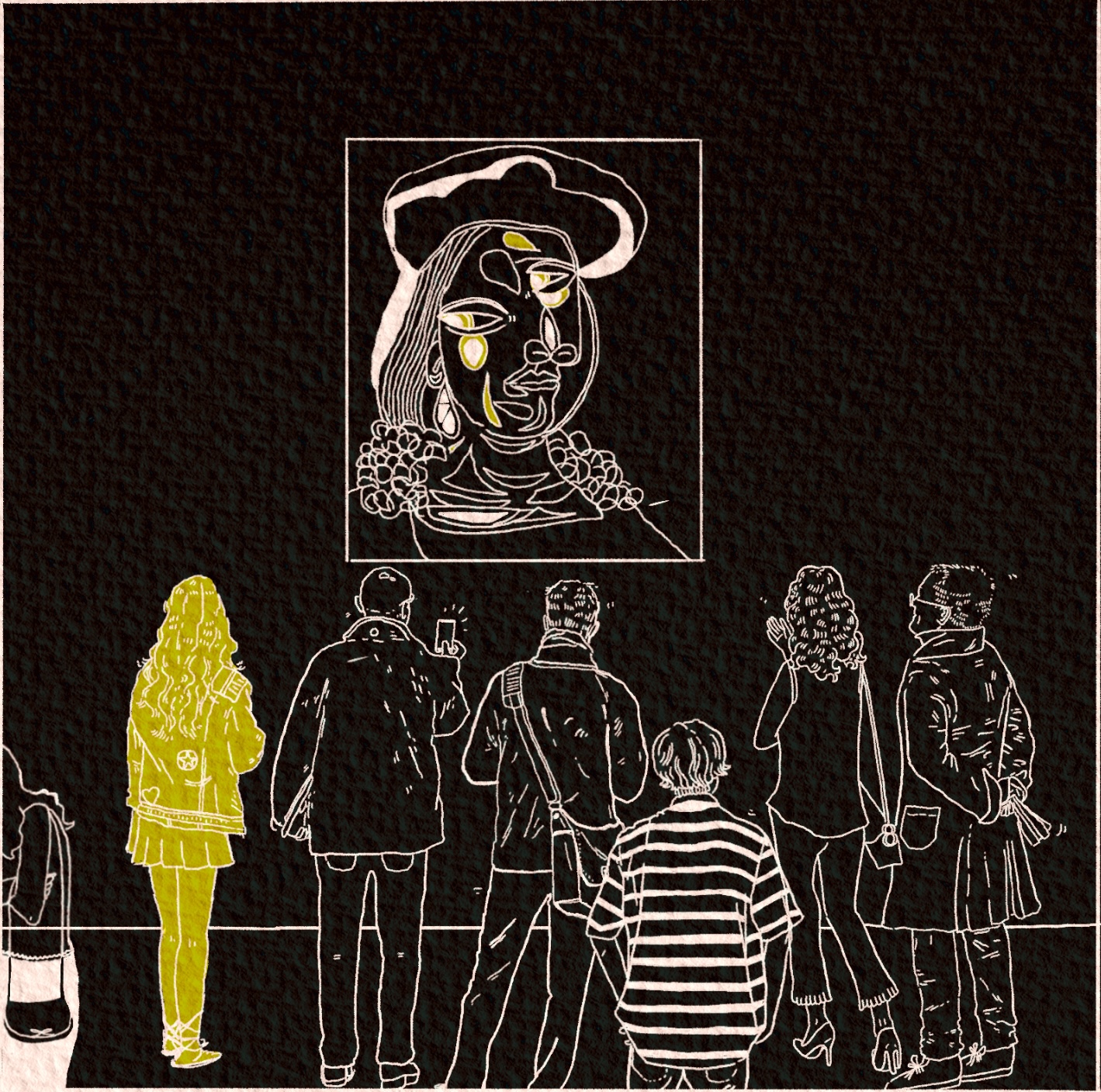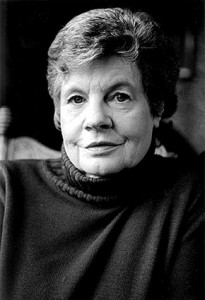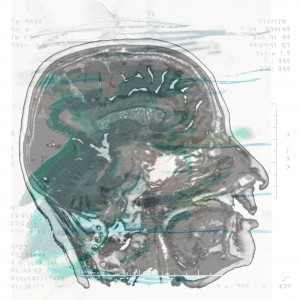
Help, I’m A Highly Sensitive Person, Get Me Out Of Here!
by Imee Marriott | June 25, 2023
Every good self-help book has a checklist somewhere within its pages. It’s a maxim that some personal development writers have ignored to their peril, whilst others have readily embraced. Researchers and co-authors Jenn Granneman and Andre Sólo belong to the latter camp. With the part self-help manifesto, part psychological exploration that is Sensitive: The Hidden Power of the Highly Sensitive Person in a Loud, Fast, Too-Much World, they have scaled the Mount Olympus of the self-help world and toppled the gods of checklists from the summit. And, best of all, I check most of the boxes.
I’ve been known to weep at random paintings (one, in my defence, was a Picasso), have never made it through Ludovico Einaudi’s ‘Experience’ dry-eyed, and can’t think about Kristin Scott-Thomas’s unrequited love for Hugh Grant in Four Weddings and a Funeral without welling up. “You are deeply moved by art and beauty.” Check! The list of things I’ve passed out from ranges from vaccines and ear piercings to stubbing my toe and moderate exercise. “You seem to have a lower pain tolerance than other people.” Check again! I’ve even fainted off the back of a sofa mere minutes into Deadpool and have never brought myself to watch a horror film. “You have a hard time watching violent or scary movies.” Another check! Oh, and I’ve spent part of my summer term writing an article based on an unprovoked pathologization of my emotional and genetic state. “You are self-reflective, knowing your strengths and weaknesses well.” Check, check, check!
And what’s more, according to Sensitive, this array of traits does not make me completely unhinged. Rather, around 30% of the population share this brand of eccentricity, and it’s got a lot to do with the “plasticity gene” – no, not a name for some unflattering geriatric jeggings from M&S – but a genetic trait which makes a person more susceptible to being shaped by their environment. It’s a key ingredient in the mixture of 47% nature and 53% nurture that constitutes a ‘Highly Sensitive Person’ (HSP). HSPs are not an unhappy marriage between 1800’s melodrama and the woke-generation’s proclivity towards overreaction, but people who “perceive, process, and respond deeply” to all forms of stimuli, from the physical to the emotional. According to Granneman and Sólo, HSPs have an abundance of empathy, greater emotional intelligence, an innate attentiveness to detail, and oceans of creativity. The sensitive mind has given us Darth Vader’s theme, Miranda, Netflix, and the theory of evolution (in order of importance). Once HSPs recognise their sensitivity for what it is – an evolutionary advantage which likely increases “the survival odds of the whole human species” – they can harness their genetic upper hand to become the true leaders of their generation.
Hence why Granneman and Sólo are attempting to Anne-Hathaway the trait of Sensitivity: to drag it up from the depths of stigmatisation towards the shining lights of internet hype and social exaltation. The analogy isn’t as far-fetched as you may think. Much like Hathaway’s hate-to-redemption arc, which saw the actress rise from the trenches of ‘Hathahate’ to become a pop-culture darling, the common perception of sensitivity is imbued with misogyny. Female displays of emotion have been weaponized against women for centuries: the trope of the hysterical woman is a well-flexed muscle of the patriarchy. Similarly, the fear of emotion and vulnerability which underpins the supposed mantras of ‘boys don’t cry’ and ‘man up’ are essential to the makeup of toxic masculinity. This mission, however, is not just political but deeply personal. Granneman and Sólo survived the bruises of their childhoods as sensitive souls to meet, fall in love, and start a popular website called The Sensitive Refuge (like a virtual safe house for sensitive people.) Off the back of this site, they have produced the much-lauded Sensitive. I know. Writing a self-help book with your partner! What next? Teaching Sex Ed. with your dad? It’s enough to cause some minor digestive issues.
Though Granneman and Sólo’s personal and professional framework may be unusual, they are riding the waves of a larger movement, rather than instigating it. The terms HSP and SPS (Sensory Processing Sensitivity) were first coined in 1996 with the publication of psychologist Elaine Aron’s The Highly Sensitive Person. In recent years, however, these terms, along with ‘overstimulation’ have spread from the psychologist’s toolkit into the mainstream. “Sensitive is the New Strong” and “The Power of Sensitivity” are among the titles of several recent books on the subject, complete with dense subtitles and a home address of the Waterstones ‘Self-Help’ section. Hannah Jane Walker’s Sensitive: The Hidden Strength of Sensitivity and Empathy was also published this year. Type ‘highly sensitive person’ into Instagram and over 330k results will materialise. Google ‘highly sensitive celebrities’ and personalities ranging from Princess Diana and Frida Kahlo to Albert Einstein and Mozart will pop up. It seems that Sensitive is not so much the new Strong as it is the new Popular.
The spread of the language of sensitivity-processing from psychology to the mainstream is part of a wider encroaching of ‘therapy speak’ into everyday conversation. If the Highly Sensitive Person were a teenager, it would be rubbing shoulders with Enmeshment and Emotional Labour on the dance floor, sitting with Toxicity and Trauma in the smoking area: a proud patron of the nightclub clinical jargon more boundary-setting than Berghain, more of a Safe Space than Studio 54. It’s the kind of club most university students could navigate like natives, and that most people past forty would associate with hell. Despite sounding like a Cosmopolitan writer assigned to write a season of Sex Education at the last minute, the rise of ‘therapy speak’ isn’t necessarily a bad thing. It’s undoubtedly related to a greater societal awareness of mental health and the human experience. Given sky-rocketing mental health issues and tumultuous global contexts (the former being intimately related to the Covid crisis), surely this is a net positive? Indeed, self-help writers deserve some praise for their contribution to this drive to de-stigmatise and de-bunk. Susan Cain’s acclaimed Quiet, which espoused the benefits of introversion, is a key example. While I may still feel a latent tide of disproportionate anger flood my nervous system every time a well-being social media activist admonishes the public to “start a conversation”, there are many positives to this public discourse – and maybe I’m just triggered. The thing is, I’m not always sure these conversations are heading in the right direction.
As I read Sensitive, I felt a subtle tide of queasiness and it didn’t only come from the word “boundaries” and the bullet-point list of exemplary “positive self-talk”. It’s flattering to identify with an identity profile and then be informed, repeatedly, of its unique superpowers, but isn’t there something a little dangerously untoward about this need to demarcate, to divide people (especially by genetics) into those who are ‘in’ the sensitive superpower club, and those who are ‘out’? Is it really necessary for me to adopt another label in order to reach my potential? Is my sense of self only valid when grounded in the lexicon of psychology? Christina Patterson’s question, “can’t highly sensitive people just be different to other people, rather than morally superior?” is worth considering. No doubt Granneman and Sólo would argue that of course they can, the difference being that sensitivity is a trait which has endured a disproportionate amount of stigma. A fair argument, especially when we think back to the gendered applications of the term. But does it not also relate to a slightly unsavoury obsession with categorising people, putting them into neat boxes with a set list of pros and cons? Does it not dally a little too long on the helter-skelter of individualism, and on the modern obsession with our own selves – sometimes at the expense of others?
Sensitive and its context reminds of the Myers-Briggs Type Indicator (MBTI), taken by over two million people a year – personality testing is now a two-billion-dollar industry. The MBTI rests on the idea that people can be categorised into sixteen different personality “types”. According to popular spin-off website www.16personalities.com, I am an ENFJ-T, symbolised by a cartoon-esque figure who looks rather like Keanu Reeves if the actor had stronger eyebrows and cosplayed Legolas. When I retake the test several hours later, I have morphed into a serene looking elf-woman with lime green lipstick, an INFJ-T. The MBTI types are having a moment on social media currently, spawning a medley of memes. Though rooted in psychology and heavily influenced by Carl Jung, the MBTI is not a reliable scientific instrument: over half of the people who take it a second time get a different score, and it relies entirely on self-reportage. Furthermore, despite the wide range of uses it is put to –- assessing soldiers, employees and students – there is little evidence that personality testing is useful for cultivating managerial skills, team building, or career counselling.
Conversely, the science behind Sensitive is relatively robust –- though measured through self-reportage, degrees of sensitivity do appear to reflect objective differences in brain functioning. However, the import of the MBTI and its link to self-help books on traits like sensitivity and therapy speak becomes clearer when we consider how it all gestures towards a desire for self-discovery – or, rather, self-construction. The reason why books like Sensitive contain the glowing testimony of individuals empowered by their self-identification as HSPs – and why a national treasure such as Miranda Hart would tweet “[w]hen I found out I was HSP it truly changed and saved my life” – is because it validates something we may otherwise experience as negative or perplexing as knowable, even positive. Labelling ourselves as an HSP, ENFP, a Libra, or an Introvert allows us to hijack the gravitas and rationality of scientific, or spiritual, or psychological language to ground our identities. It’s a similar phenomenon to the relief and enablement some people report on the reception of a mental health diagnosis: the acknowledgement that there’s nothing drastically or ineffably wrong with you but rather a discernible condition (often farmed in terms of a genetic quirk), something treatable.
But is labelling a cure-all? Labels can come laden with negative connotations, restrict, and provide negative reinforcement. They leave little room for the messy, impermanent, incomplete nature of selfhood. They help us self-construct but limit our vocabulary in doing so. The extensive clinical literature on diagnostic terms reflects this: what helps some can prove to be oppressive to others. Granted, this has a lot to do with the context in which people receive these terms, and the degree to which they are stigmatised – diagnoses such as depression and OCD are more likely to be experienced positively than BPD or schizophrenia. There are key, personal variables here, a need to avoid generalisation. But if a humanities degree has taught me anything, it’s the power of language, of words, and the power they hold both to emancipate and circumscribe. It’s worth reflecting on the language we use to construct our tangled selves – for construct ourselves we do, though there’s an understandable scepticism when we discuss it so bluntly. Construction seems suspiciously close to façade, antithetical to the notions of integrity and sincerity that we hold so highly. No-one wants to be labelled two-faced, and we are constantly encouraged to honour our ‘authentic selves’, to speak our ‘truth’. Perhaps this is a point to remind ourselves that authenticity and truth are constructs and labels, too.
So sure, if the check lists of Sensitive were a test, I’d pass with flying colours, and feel an afterglow of smugness in doing so, in the knowledge that I belong to the select 30% of the population who possess Granneman and Sólo’s “Sensitive Boost Effect”. Certainly, Sensitive offers a degree of comfort: an affirmation that the way I react to the world has more to do with my genetic predisposition than an innate character flaw or defect. And perhaps some of its advice has a place on my metaphorical bookshelf of self-help tips – though, much like the backdrops of Zoom-interviewed politicians, I suspect their function will prove more decorative than pragmatic. But I’ll be careful before I cover myself too liberally with the label: you won’t observe me talking about my HSP superpowers over a mid-week pint, or reposting graphics titled ‘5 Things Highly Sensitive People Want You To Know’ on my Instagram story. I won’t be attempting to gatekeep some form of sensitivity-catchment clique or explain how I’m implementing boundaries against over-stimulation to my grandparents.
And you certainly won’t catch me identifying as a HSP in print.
∎
Words by Imee Mariott. Art by Ellie Moriuchi




